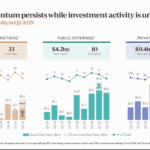U.S. online spending surged to $24.1 billion between July 8 and July 11, according to Adobe Analytics, as Amazon’s annual Prime Day event — now stretched to four days — sparked a wave of deep discounts and competing promotions across major retailers.
The extended sales window, which some have dubbed a “Black Friday in Summer,” recorded a 30.3% year-over-year increase, outpacing Adobe’s initial forecast of 28.4%. In comparison, U.S. online retail sales during this period totaled $14.2 billion just a year ago.
Prime Day’s longer run — doubled from the usual 48 hours to 96 hours this year — helped fuel spending momentum. While the first day’s sales rose a modest 9.9% from last year, daily volumes accelerated sharply over the following three days as shoppers seized steep markdowns across categories.
The annual sales event has expanded far beyond Amazon itself, with Walmart, Target, Best Buy, and other major retailers rolling out overlapping deal days to compete for shoppers’ attention and budgets. According to Adobe, discounts across U.S. retailers ranged from 11% to 24%, with the deepest cuts seen in apparel (24%), electronics (23%), and toys (19%).
Retail analysts noted the scale of promotions this year effectively turned the summer event into a multi-day discount season. “Prime Day has evolved from a shopping event into a shopping season,” said Tristan Williams of Envision Horizons.
Prime Day has also firmly established itself as a key back-to-school shopping moment. Many shoppers used the discounts to stock up early on kids’ clothing, school supplies, dorm room basics, and big-ticket household purchases like home appliances, furniture, and computers.
Adobe reported significant growth in some segments: office supplies sales jumped 105%, electronics rose 95%, and books, tools, home improvement, and baby/toddler items all saw double-digit increases.
Mobile devices continued to be the dominant shopping channel during the event. Smartphones accounted for 53.2% of all Prime Day online transactions in the U.S., slightly ahead of Adobe’s 52.5% forecast.
This year’s summer shopping surge came against a backdrop of trade uncertainty. Many consumers reportedly rushed to buy before the August 1 deadline for countries to renegotiate trade deals with the U.S., under new tariff policies that have added price volatility to imported goods.
Adobe’s data shows that, collectively, this four-day Prime Day window outperformed last year’s combined Black Friday and Cyber Monday online totals, setting what the company called a “new benchmark” for midyear retail performance.
Amazon, which first launched Prime Day in 2015 as a single-day event, has gradually extended the promotion since 2019. The company described this year’s Prime Day as its biggest yet in terms of both sales and items sold.







Comments
Loading…